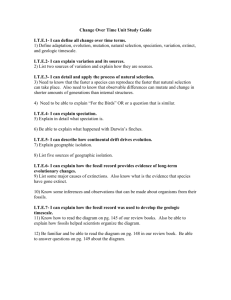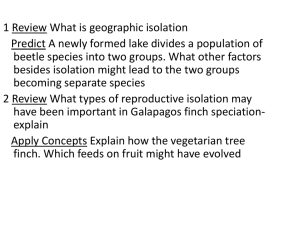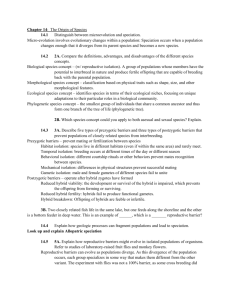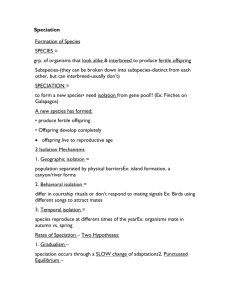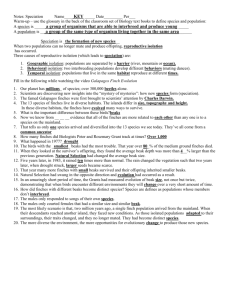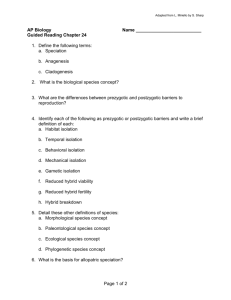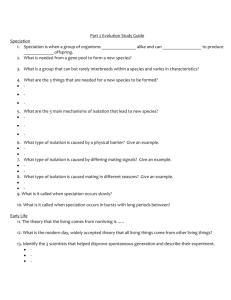Worksheet 17.3
advertisement
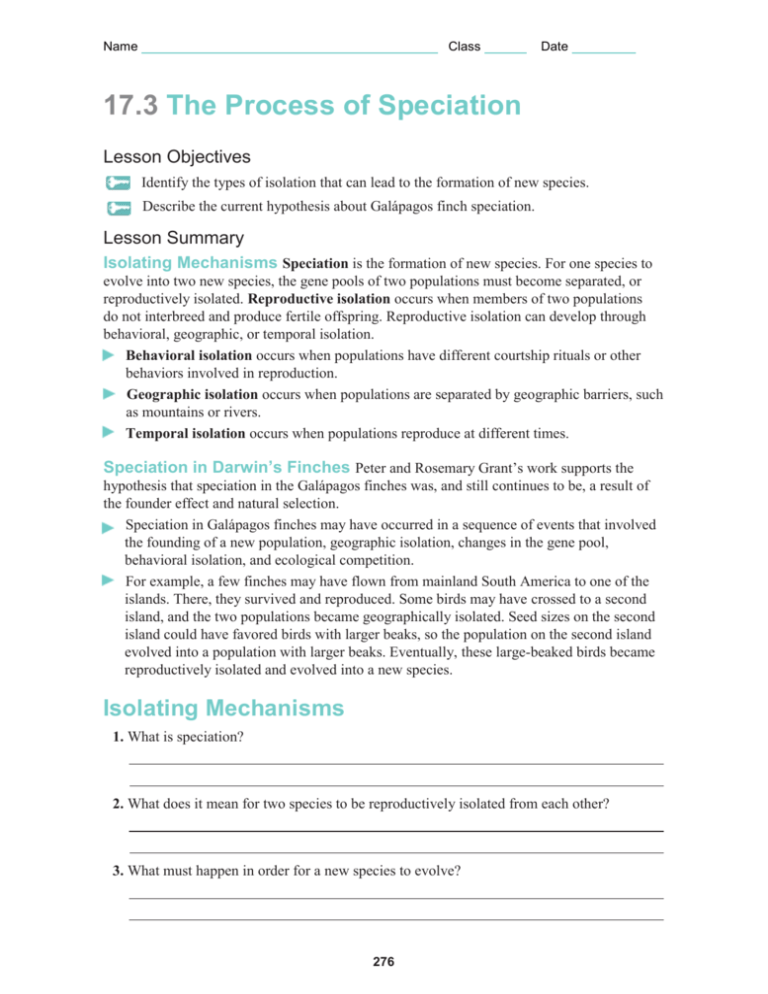
Name Class Date 17.3 The Process of Speciation Lesson Objectives Identify the types of isolation that can lead to the formation of new species. Describe the current hypothesis about Galápagos finch speciation. Lesson Summary Isolating Mechanisms Speciation is the formation of new species. For one species to evolve into two new species, the gene pools of two populations must become separated, or reproductively isolated. Reproductive isolation occurs when members of two populations do not interbreed and produce fertile offspring. Reproductive isolation can develop through behavioral, geographic, or temporal isolation. Behavioral isolation occurs when populations have different courtship rituals or other behaviors involved in reproduction. Geographic isolation occurs when populations are separated by geographic barriers, such as mountains or rivers. Temporal isolation occurs when populations reproduce at different times. Speciation in Darwin’s Finches Peter and Rosemary Grant’s work supports the hypothesis that speciation in the Galápagos finches was, and still continues to be, a result of the founder effect and natural selection. Speciation in Galápagos finches may have occurred in a sequence of events that involved the founding of a new population, geographic isolation, changes in the gene pool, behavioral isolation, and ecological competition. For example, a few finches may have flown from mainland South America to one of the islands. There, they survived and reproduced. Some birds may have crossed to a second island, and the two populations became geographically isolated. Seed sizes on the second island could have favored birds with larger beaks, so the population on the second island evolved into a population with larger beaks. Eventually, these large-beaked birds became reproductively isolated and evolved into a new species. Isolating Mechanisms 1. What is speciation? 2. What does it mean for two species to be reproductively isolated from each other? 3. What must happen in order for a new species to evolve? 276 Name Class Date 4. List three ways that reproductive isolation occurs. 5. When does behavioral isolation occur? 6. When does geographic isolation occur? 7. What is an example of temporal isolation? 8. Suppose a seamount forms from an underwater volcano. Birds on the mainland colonize the island. How might this lead to speciation? Speciation in Darwin’s Finches For Questions 9–13, complete each statement by writing the correct word or words. 9. Peter and Rosemary Grant spent years on the Galápagos Islands studying changes in populations. 10. Many finch characteristics appear in bell-shaped distributions typical of traits. 11. The ancestors of the Galápagos Island finches originally came from the continent of . 12. The populations of finches on separate islands are one another by large stretches of open water. 13. Big-beaked finches that prefer to mate with other big-beaked finches are isolated from small-beaked finches living on the same island. 277 isolated from 14. Write a paragraph that summarizes how speciation likely occurred in the Galápagos finches. Use the following terms in your response: geographic isolation, gene pools, behavioral isolation, and competition. Apply the Big idea 15. Explain why reproductive isolation must occur for separate populations of the same species to evolve into different species. 278

